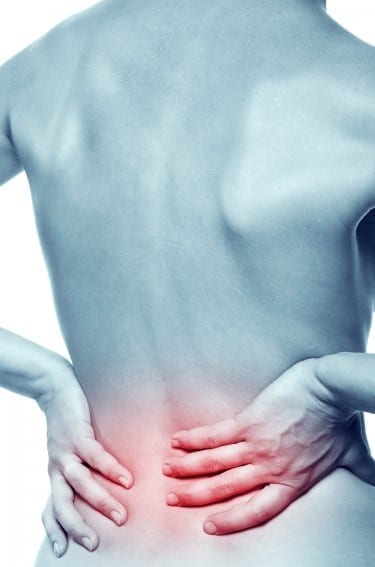
For runners and cyclists, knee pain is the most prevalent injury, but lower back pain is the most common reason they seek medical help. Fifty percent of cyclists and 10 percent of runners experience lower back pain and the causes vary from simple overuse to bad posture to muscle weakness. Identifying the source of lower back pain can help you eliminate it and get back to your training regimen.
A posture problem
On a bike, your back is in a flexed position for a prolonged period of time. Your lower back is at the mercy of how your bottom is on the seat and the suspension of your upper body on the handlebars via your arms. Most cyclists have no idea they are too flexed and maintain this position regardless of pain levels. Adjusting the saddle or handlebar stem may correct this hyperflexion. Often, a bike fit assessment and bike motion analysis is necessary to catch and correct it.
There is no postural relationship established in runners, yet an extreme posture may contribute to lower back pain. Running involves higher vertical impacts than cycling and therefore, runners experience impact in ways that cyclists do not. The force of each step can be two to four times your body weight and is dampened by your body, including your back. Appropriate recovery time, stretches, muscle training, massage and modalities like heat, ice and sports creams may be enough to get you “back” to running. If the pain lingers, there could be an issue that needs to be evaluated by a health care professional.
The core issue
In cycling, core weakness makes you use your legs less efficiently, which influences your ability to produce power. This includes greater side-to-side movement at the knees and moving your ankles more during the pedal stroke. This inefficiency translates to the bike, creating more wobble in the bike path and potentially adding miles to the ride. Similarly in running, a weak core affects how you use your legs to absorb impact. Your knees and feet can cave in and the pelvis can drop excessively, causing strain or injury. For both runners and cyclists, core strengthening is an important piece of the training and rehabilitation puzzle.
Body imbalance
Whether it is dropping or rotating your pelvis, striding longer, pushing off with more force on one foot or pedaling unevenly, you may use one side of your body differently than the other. This imbalance can lead to lower back pain among other problems. Imbalance issues can be corrected by doing unilateral exercises like standing on one foot or bridging on one leg. Often it is easy to perceive a difference between the two sides during a muscle stretch or training exercise. If not, a movement specialist like a physical therapist can recognize the underlying issues and help you achieve a more balanced state.
While you might be able to fight through it for a while, lower back pain usually results in missed runs and rides until you can correct the underlying problem. Taking proper measures to identify the cause will help get you back on track.

